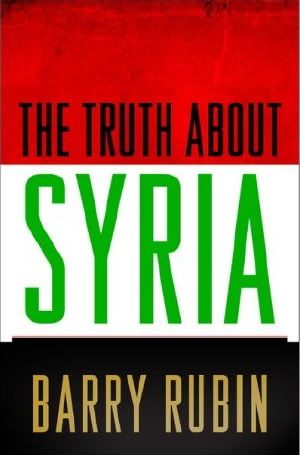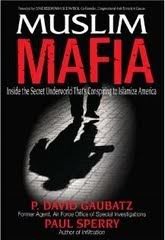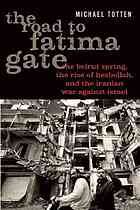Friday, October 2, 2009
Prophecy News Watch: Analysis: The Islamic republic of Gaza
Sep. 29, 2009
JONATHAN SPYER , THE JERUSALEM POST
Deriving accurate and reliable information from within the Hamas-ruled Gaza Strip is not easy. The Strip is largely closed to journalists, and its inhabitants are reluctant to speak in detail of events there.
Nevertheless, reliable sources confirm that one observable trend taking place there is the growing dominance of Islam. This process is being driven forward by the growing strength of Salafi and extreme Sunni elements.
A slow introduction of Islamic norms and practices into society began immediately following the Hamas victory in PLC elections in January 2006. This process was accelerated following Hamas's seizure of exclusive control of Gaza in 2007.
However, there are clear internal differences in the movement regarding the pace of change. Hamas's current leadership has tended to favor a slow encouragement of Islamic practices and rules, without straying too far from the desires of the broader public.
More hardline and Salafi elements within the movement want a stricter and more formal introduction of Islamic norms. Events over the last 18 months indicate that the latter camp is now making the running, with Hamas's leadership under pressure from extreme forces both within the movement and beyond it.
This change is being felt in the very fabric of daily life in Gaza. A transition of the status of Islamic observance from social norm to legal compulsion is under way.
The most obvious sign of this is the creation of the new "Propagation of Virtue and Prevention of Vice" security force, which operates under the command of the Ministry of the Waqf (Islamic Endowment).
This force is tasked with enforcing Islamic codes of behavior. Its members patrol beaches, parks and public areas, ensuring proper Islamic modesty.
One source describes how a man wearing shorts while sitting on his own balcony in southern Gaza was spotted and advised that this must not happen again. Rules banning men from bathing topless, and women (who may still bathe separately from men and fully covered) from laughing or smiling while bathing, are also in the process of enforcement.
A special all-female unit within the police has also been created, with responsibility for enforcing female modesty and handling female suspects. This force, numbering 100-150 officers, wear niqab and gloves, with only an eye slit visible.
Other forms of social control are also being strengthened. Every mosque now has an Amir al-jamia or "head of the community" who according to sources functions as a kind of political commissar on behalf of the authorities. It is his task to observe the prayer habits of all members of the mosque, and to intervene and offer help where insufficient devotion is diagnosed.
More familiar methods of increasing public dependence on the authorities may also be observed. Preferential access to desperately needed social services for those close to the rulers of the Strip is becoming increasingly apparent. In the spring of 2009, Hamas established the "Islamic National Bank."
An Islamic insurance company and Islamic investment bank have since also been set up. Increasingly, Hamas's ample social welfare budgets are channeled through these bodies. Similarly, Islamic charity organizations are increasingly replacing elected local governments as the providers of social services. The result is to establish channels of material dependence between the public and the Hamas organization.
Few women may now be seen in Gaza without the hijab. More and more are now wearing the jilbab (the long, shapeless black dress associated with Islamic piety).
The wearing of the hijab is now said to have become an accepted social norm - perceived as a requirement when outside of the home even by Gaza's few remaining Christian women. From the summer of 2009, the wearing of the hijab and jilbab became required in Gaza's secondary schools (according to some sources, certain schools have chosen to ignore this instruction).
It is not only dress in schools, but also the content of study which is becoming increasingly religious in character. Many secular teachers have been fired. Hamas summer camps, which provide cheap alternatives for poor families in the summer months, involve intensive Koran study and competitions which again can provide access to much-needed funds and jobs.
The promotion of Islamic norms in Gaza extends to the widespread banning of books and restricting of access to "immoral" internet sites. In 2007, there was an outcry when a book of Palestinian folk-tales, "Speak bird, speak again" was banned in the Gaza Strip because of its supposedly lewd content.
Today, such bans are the norm, and no longer merit much attention. The increasing use of Islamic Sharia law in judicial proceedings in Gaza is an additional facet of the growing influence of Islam on life there. The formal judicial system remains in existence. But it is being filled with Islamic content.
For example, the local reconciliation committees, which were once a forum where clans resolved issues by mediation, have now largely been transformed into Islamic reconciliation committees concerned with the dispensing of advice and guidance based on Sharia law.
It is important to note that these developments do not represent the playing out of some Hamas master plan for the creation of an Islamic republic. Rather, they are taking place because of grass-roots agitation and insistence on the part of ultra-religious elements both within Hamas and outside it.
The Hamas leadership depends on Islamic legitimacy, and is thus vulnerable to claims that is it is merely a nationalist group waving the flag of Islam. Hamas jealously guards its political power - also from its Salafi rivals. But in matters of Islamic observance, it appears willing to bow to their wishes and pressure.
The result is that without any recognized body deciding upon it, an Islamic mini-state in the full sense is currently emerging in Gaza.
Subscribe to:
Post Comments (Atom)











No comments:
Post a Comment